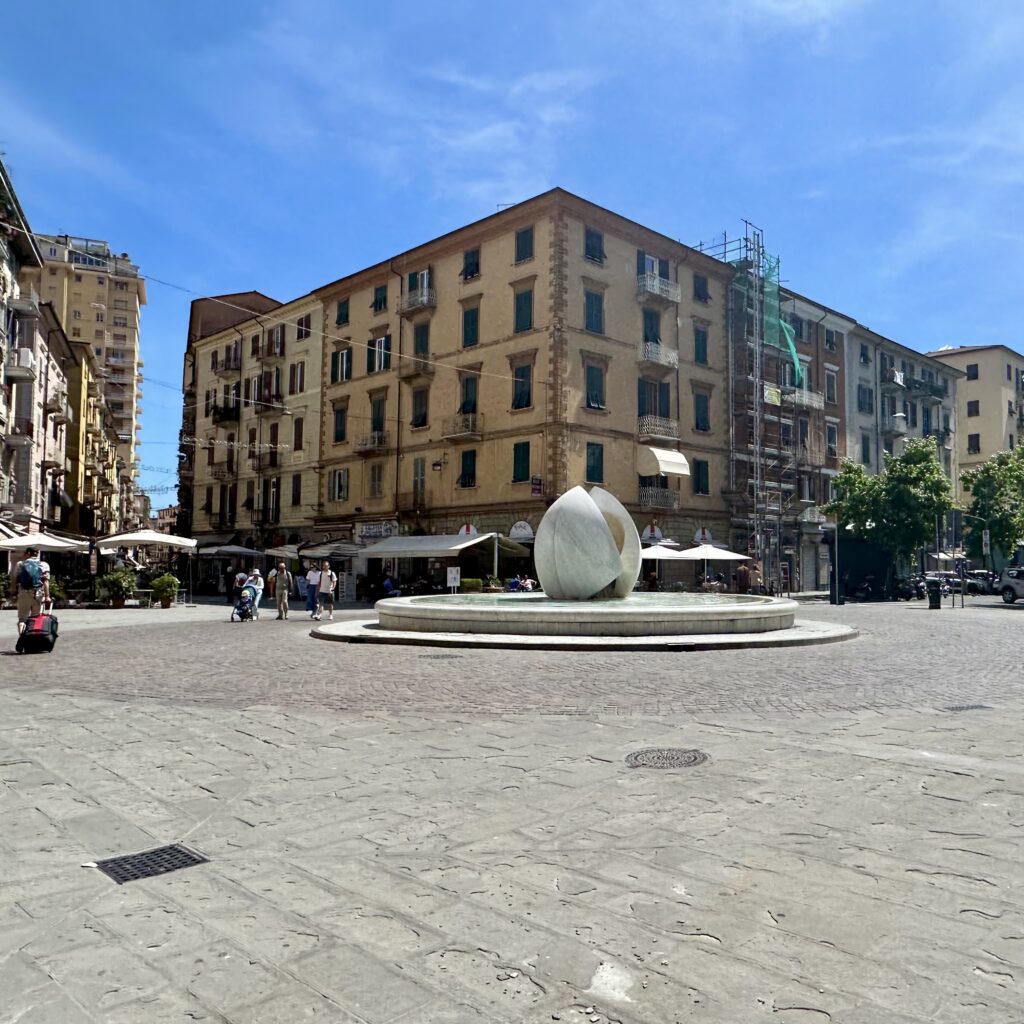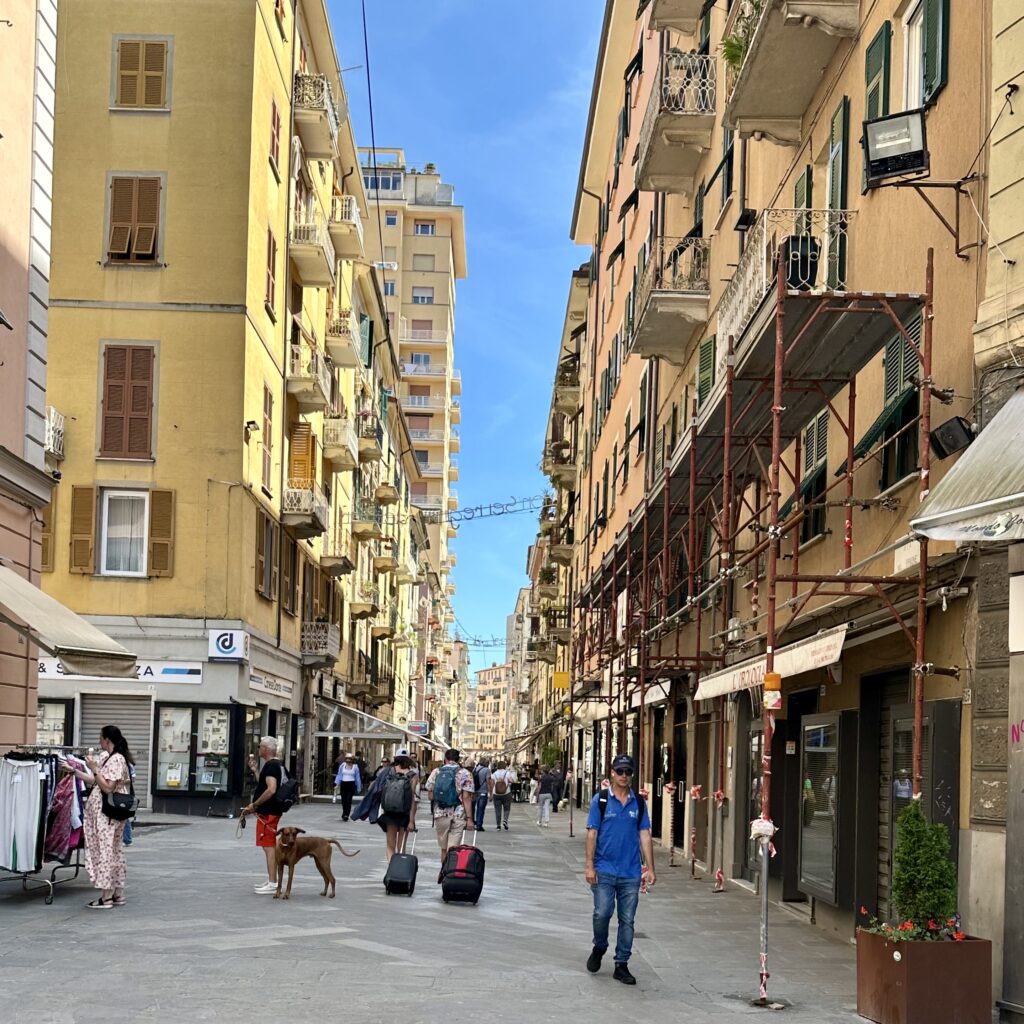Day trip from Florence
This was our 2nd time visit to Cinque Terre and leaning tower of Pisa. In 2014, we did a private tour which covered 4/5 villages and Pisa. In 2025, we were part of a Viator group tour and visited 2/5 Cinque Terre villages and Pisa. We had only one day to spare on both occasions and hence did a day trip. In my opinion, 2 days will be ideal to see all the 5 villages and leaning tower of Pisa in a more relaxed way.
- Cinque Terre, Manarola
- Cinque Terre, Monterosso
- Cinque Terre, Corniglia
- Cinque Terre, Vernazza
- Cinque Terre, Riomaggiore
- Pisa complex
Chinque Terre – is a string of five ancient fishing villages perched high on the Italian Riviera in northwest Italy. There are many ways to explore the 5 pretty villages –
- Guided tour
- Hike from one village to next along the scenic coastline
- Train from one village to next (Starting from the town of La Spezia)
- Ferry from one village to next
We visited the villages in 2014 for the first time. At that time, we had rented a car and were dropped off near the entrance to each village. We then explored each of the villages on our own, strolling trhough the colorful and narrow streets, enjoying the views of the harbour with colorful boats, watching people on the beach. More recently in 2025, when we visited 2 of the villages on a viator guided tour, we took the train from La Spezia and got off at Manarola.

Manarola is one of the most picturesque villages with a tiny harbor filled with colorful boats and a perfect place for sunbathing and cliff jumping. After we got off the train, the guide took us to Piazza Dario Capellini, which will be the first piazza(square) you see in Manarola. It’s a good spot to stop and get your bearings. The plaza is in an elevated position, from where you can get a nice view of the main street. From here, you can either go down to the harbor or just walk along a trail perched on a narrow ledge on the hillside above the harbor. You get spectacular views of the colorful houses clinging to the cliffs and the harbor below from many locations along this trail.
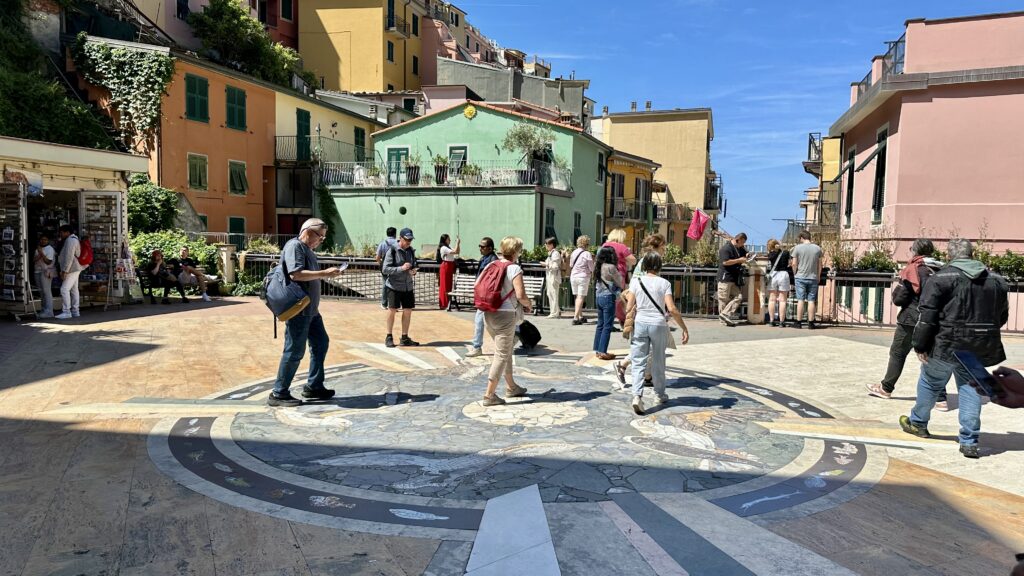
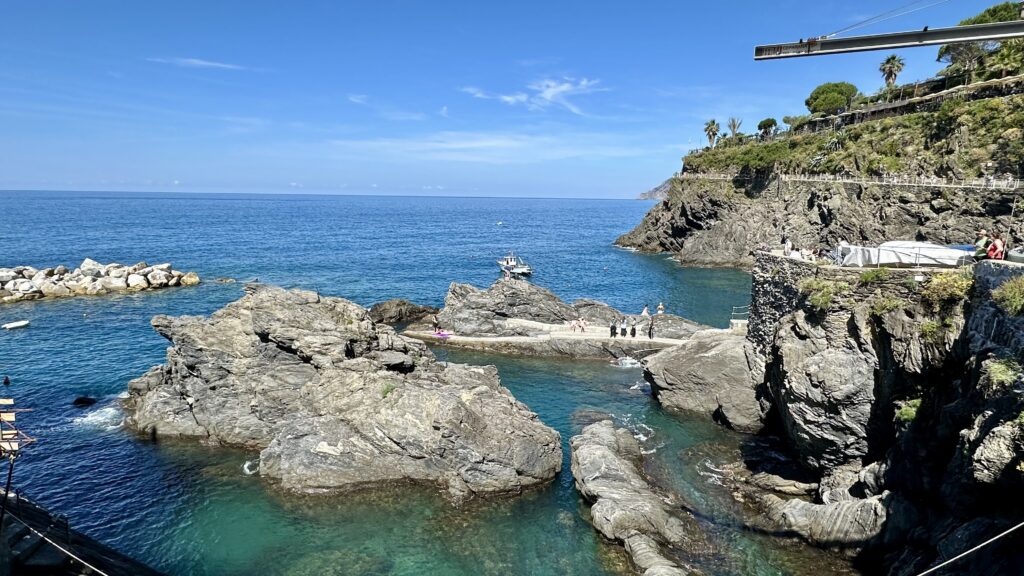
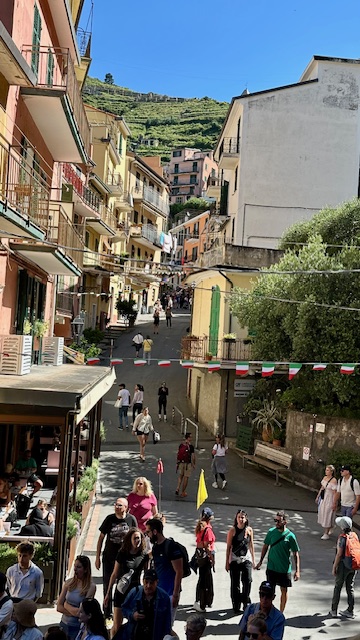
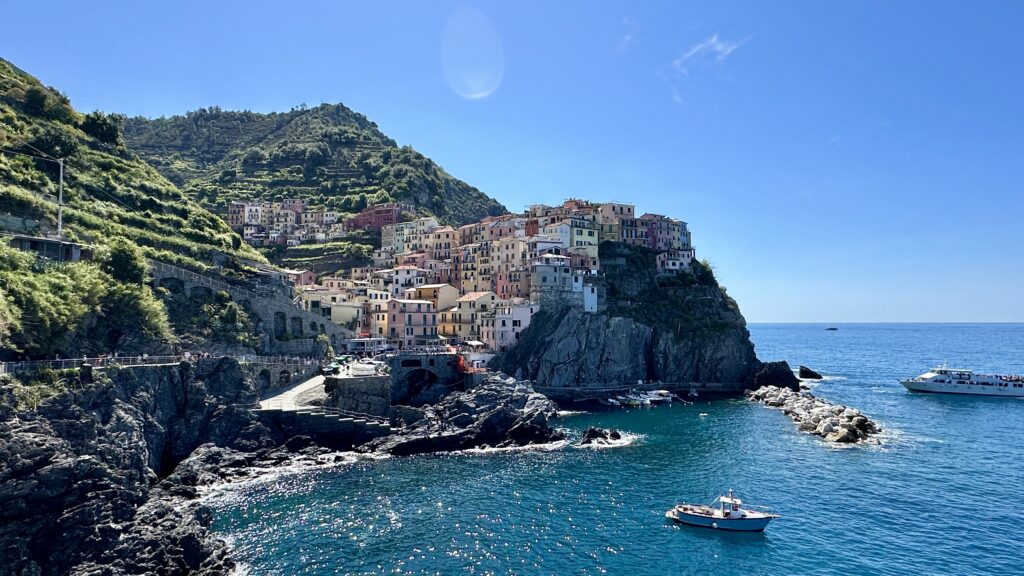
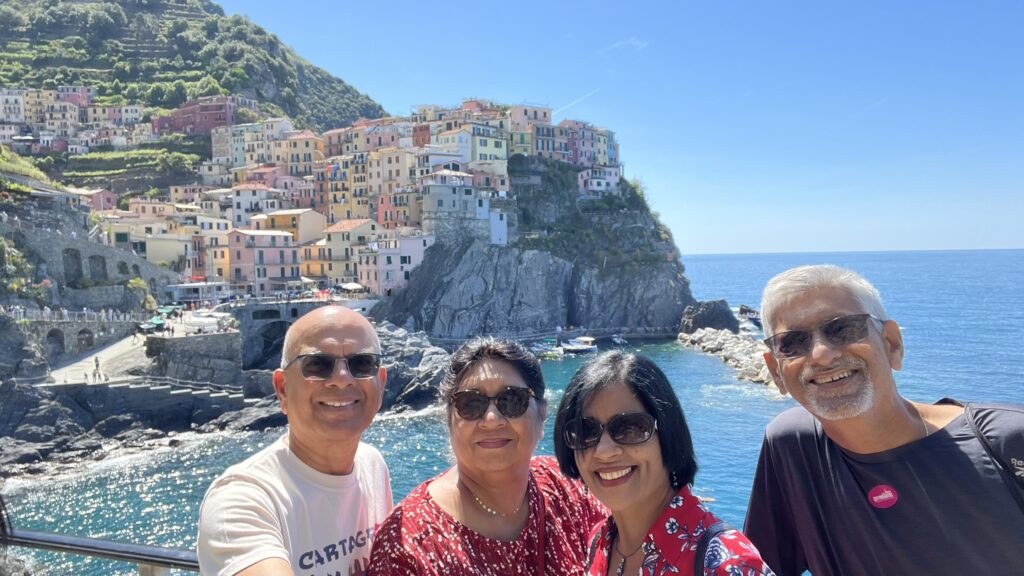
Monterosso is the last of the 5 villages on the train route from La Spezia. It is the largest of the Cinque Terre villages and also the flattest and easiest to get around. Here you will find a long beach promenade with cafes, gelato stores and restaurants. The town is divided into two distinct parts – the old town and the new town. The two areas are divided by a single tunnel that caters to pedestrians and the few cars in the town. The beach at Monterosso runs along most of the coast line and is the only extensive sand beach in the Cinque Terre.
Monterosso, New Town – The train station is in the newer Fegina area and after you get off the train, you will be right by the beach boardwalk, with a great view of the sea, colorful blue umbrellas on one side and orange umbrellas on the other.
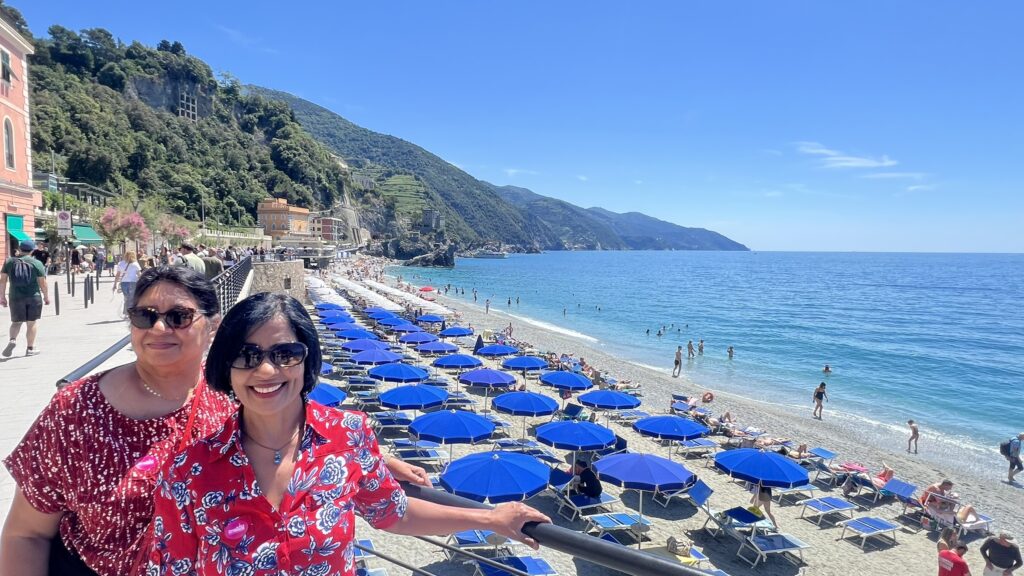
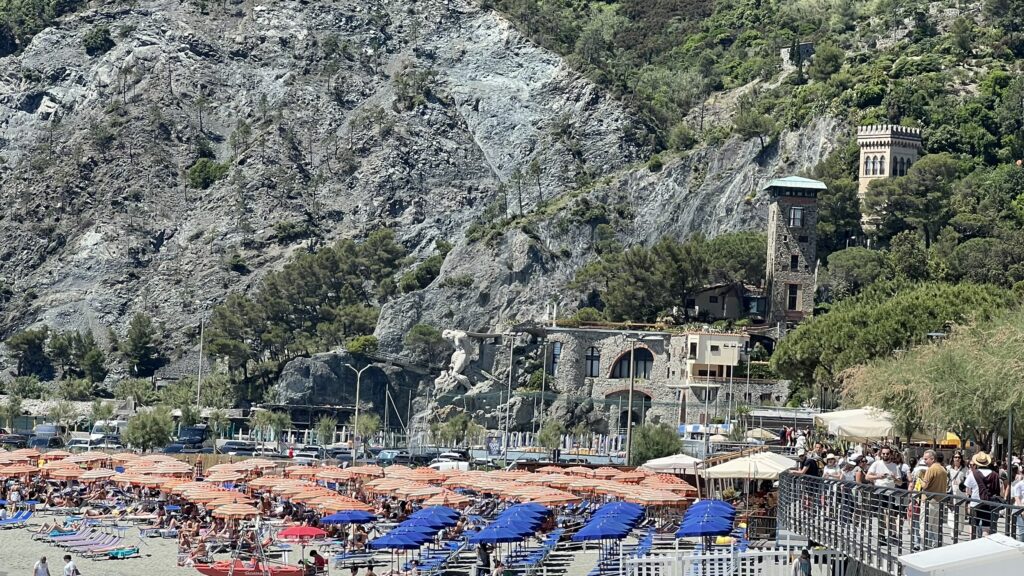
If you walk to the right in the direction of the orange umbrellas and the tower, you will end up at an impressive statue, Statua del Gigante (Statue of the Giant). The 14 meter high statue of Neptune holding the waves at bay, was originally built from concrete in 1910 to decorate the seaward edge of the elegant Villa Pastine. It quickly became a symbol of the town. The Villa Pastine and the statue suffered from allied bombing during World War II. The statue lost his arms, his trident, and the giant seashell he had held aloft.
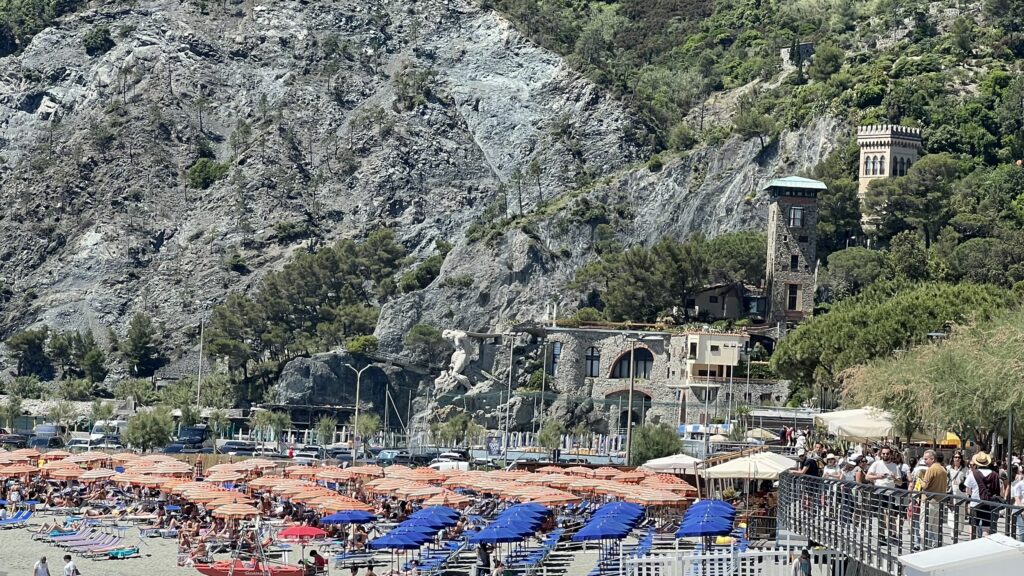
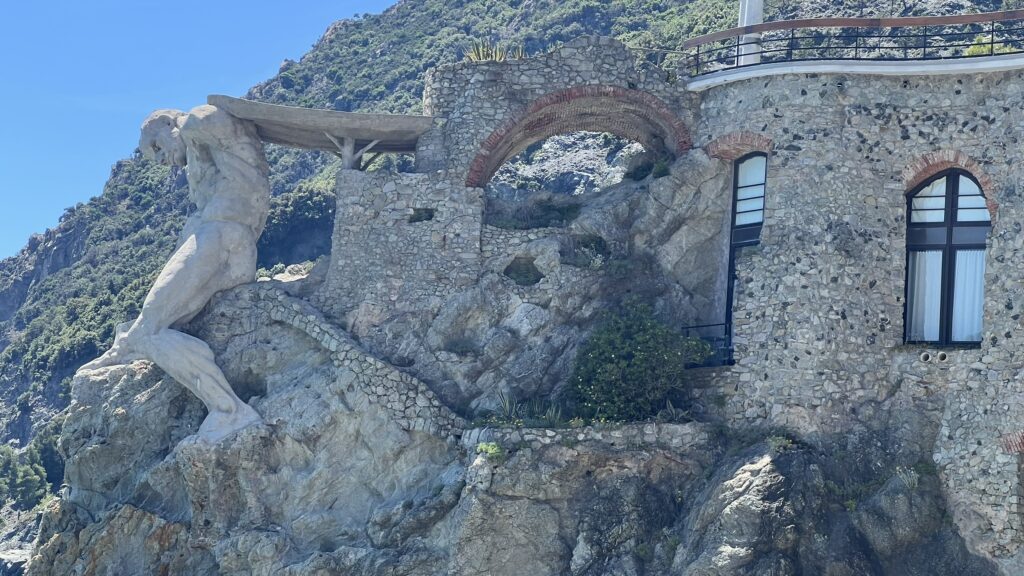
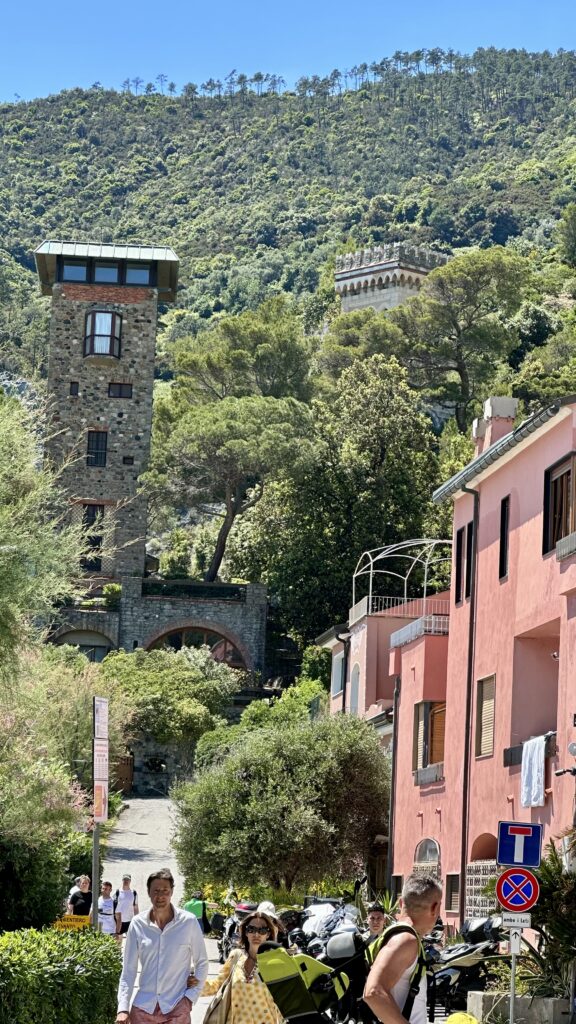
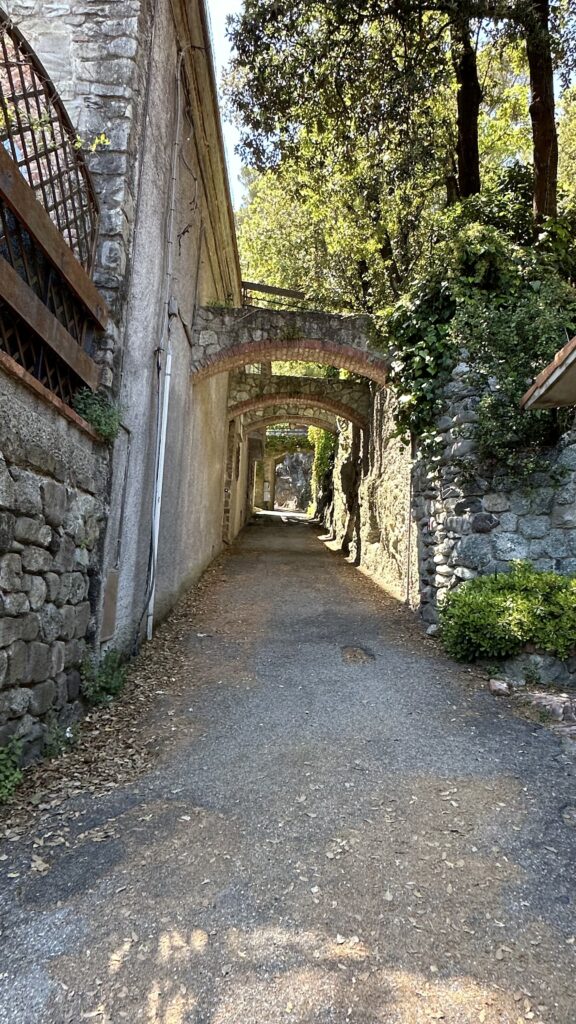
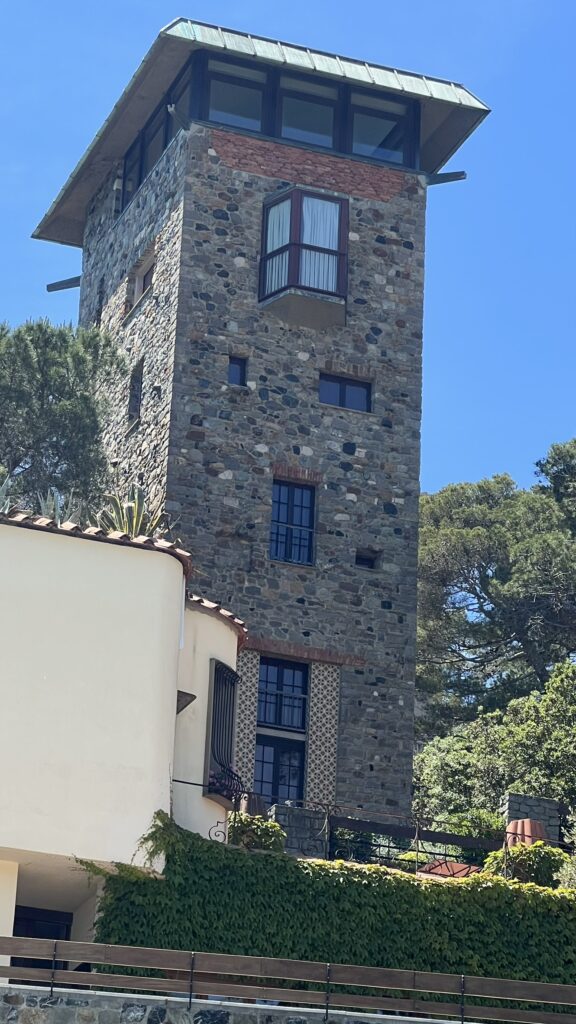
Monterosso, Old Town – We then walked along the beach boardwalk in the direction of the tunnel. We walked through the tunnel and were in the old town’s main square, Piazza Garibaldi, which houses the town hall.
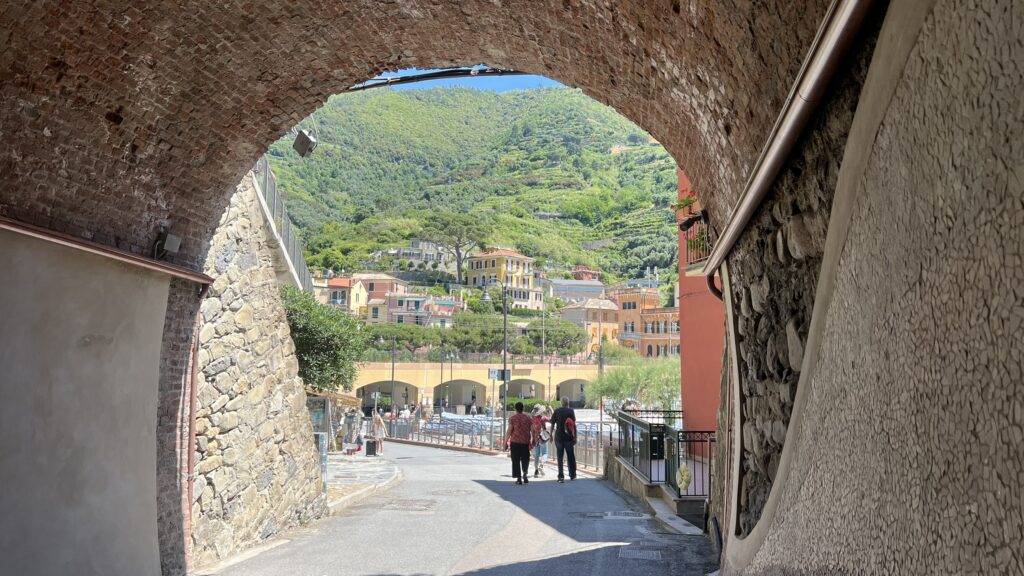
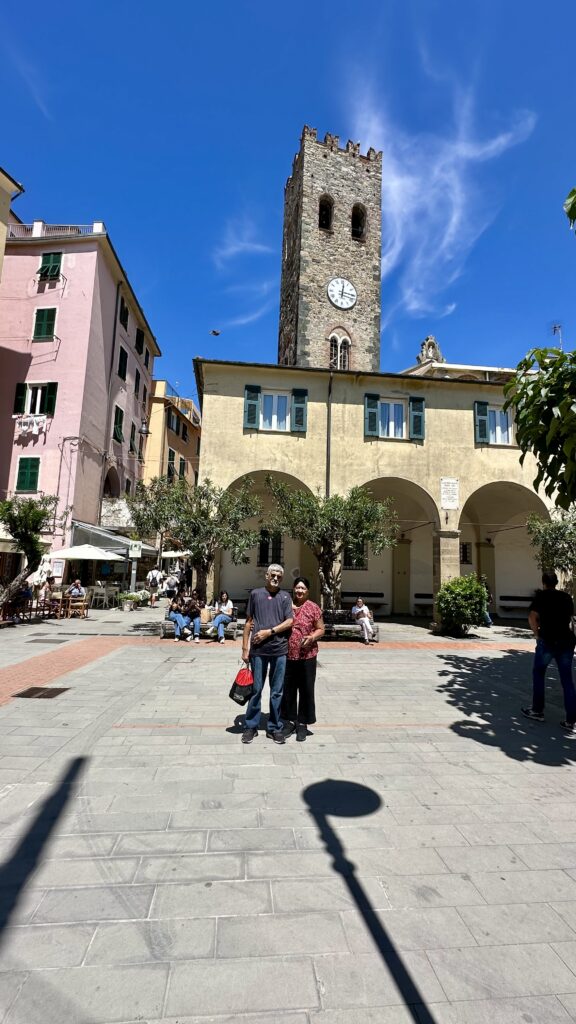
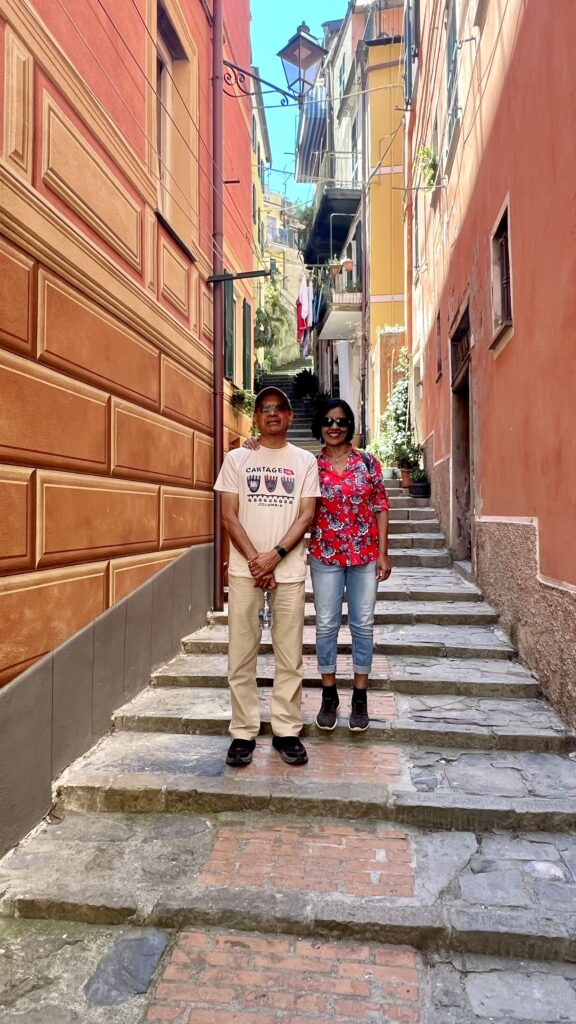
The old town is characterized by its narrow, winding streets and pastel-colored buildings, creating a charming atmosphere. There are some small churches located in the old town that was open and free to visit.
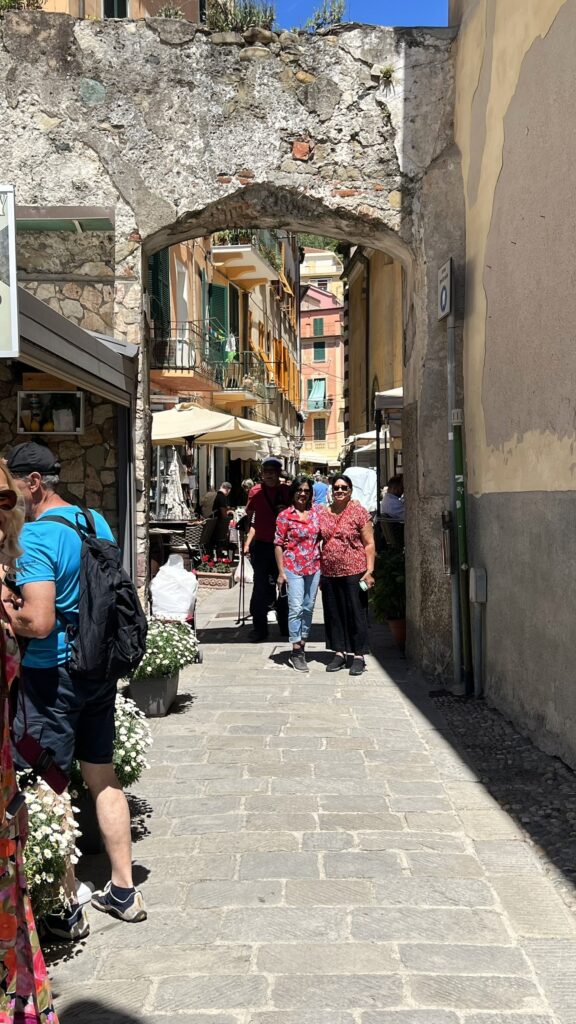
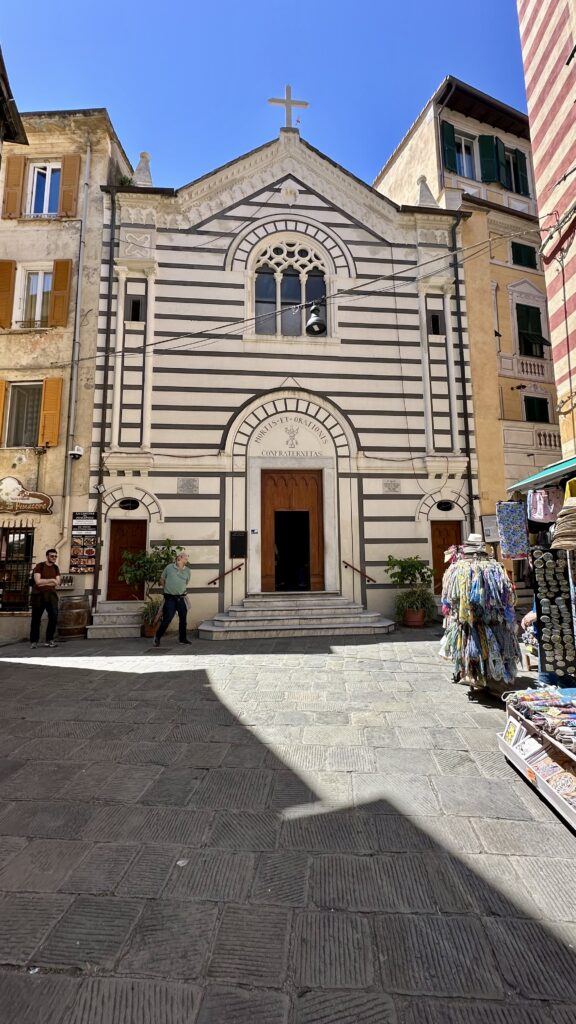
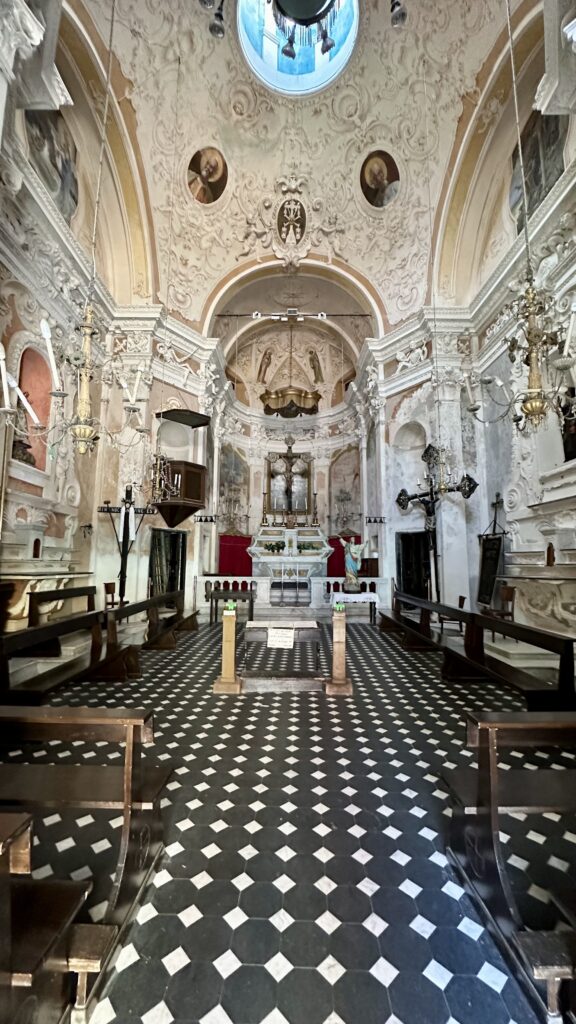
We had 2 hours to have lunch and walk around the town, enjoy the scenery and beach.
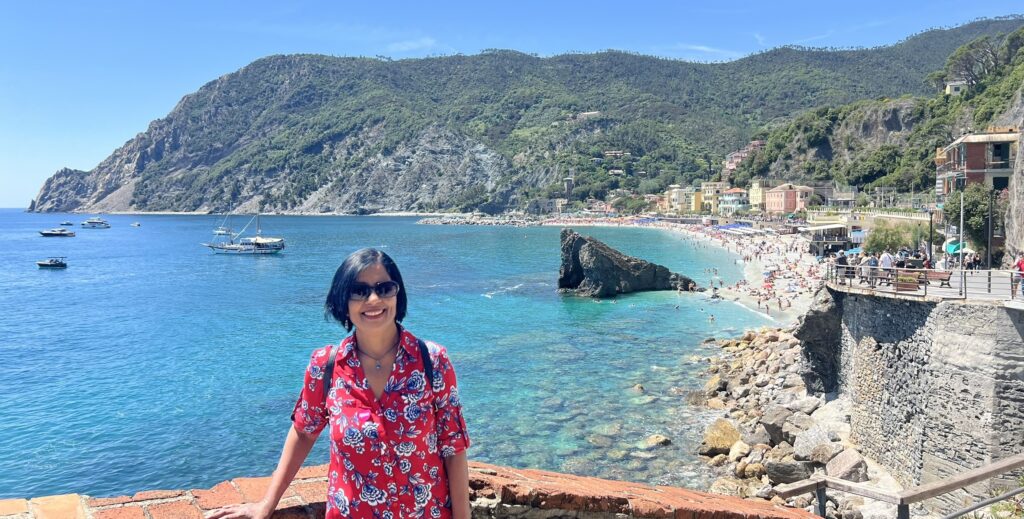
Vernazza is one of the most popular of the five villages. The tiny harbor is surrounded by colorful, typical Ligurian houses and the charming piazza is lined with good restaurants and bars. We visited this village on a private tour in 2014.
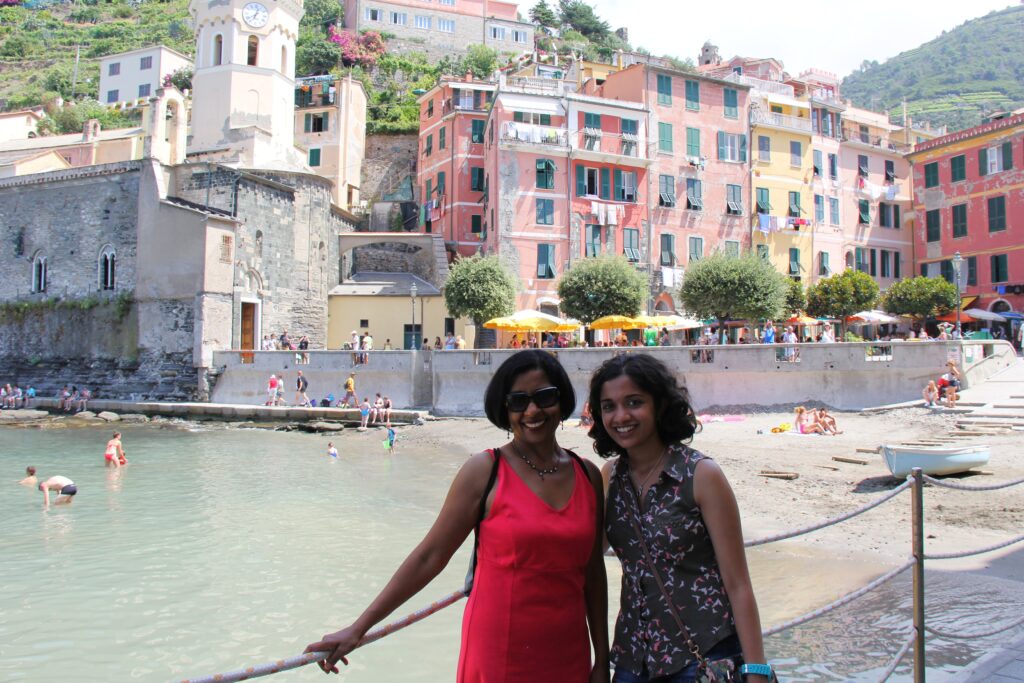
Corniglia, in the heart of Cinque Terre, is ideal for hikers and nature lovers. The smallest of the Cinque Terre villages, it is situated on a promontory overlooking the sea and surrounded by vineyards and olive groves. For those who are looking for a quiet place to stay in Cinque Terre, Corniglia is the right place. We visited this village on a private tour in 2014.
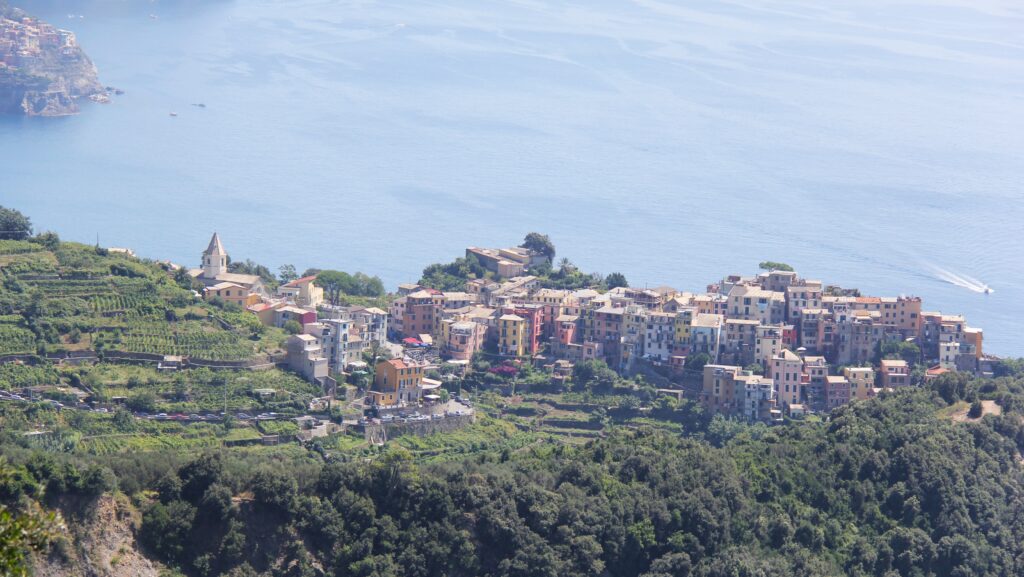
The main square (Piazza Largo Tatagio) in Corniglia has a monument dedicated to the soldiers from Corniglia who died in World War I.
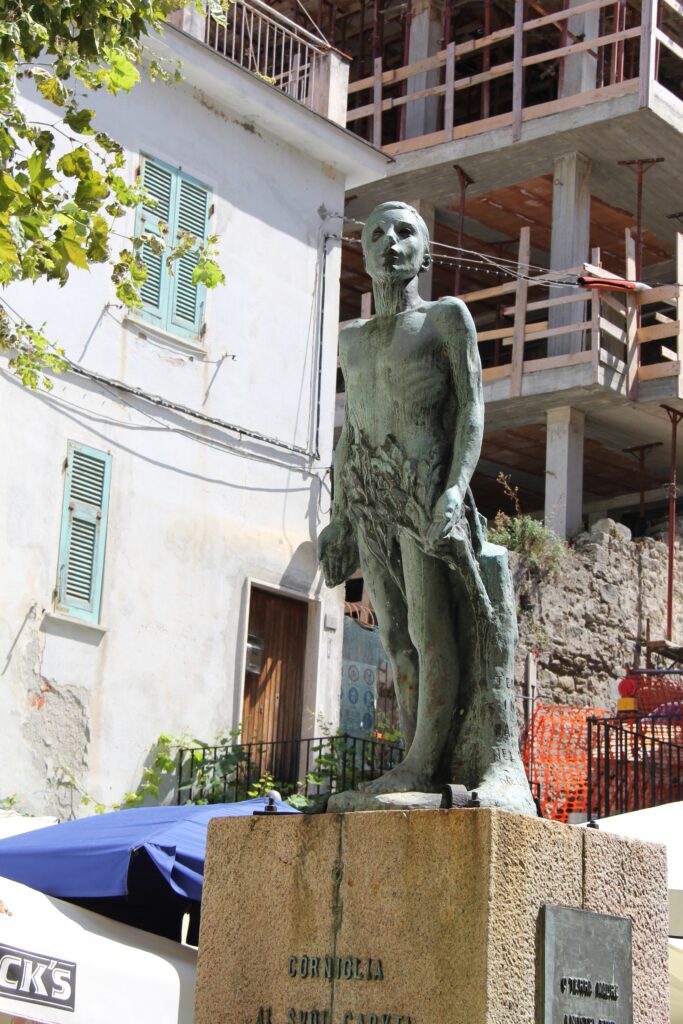
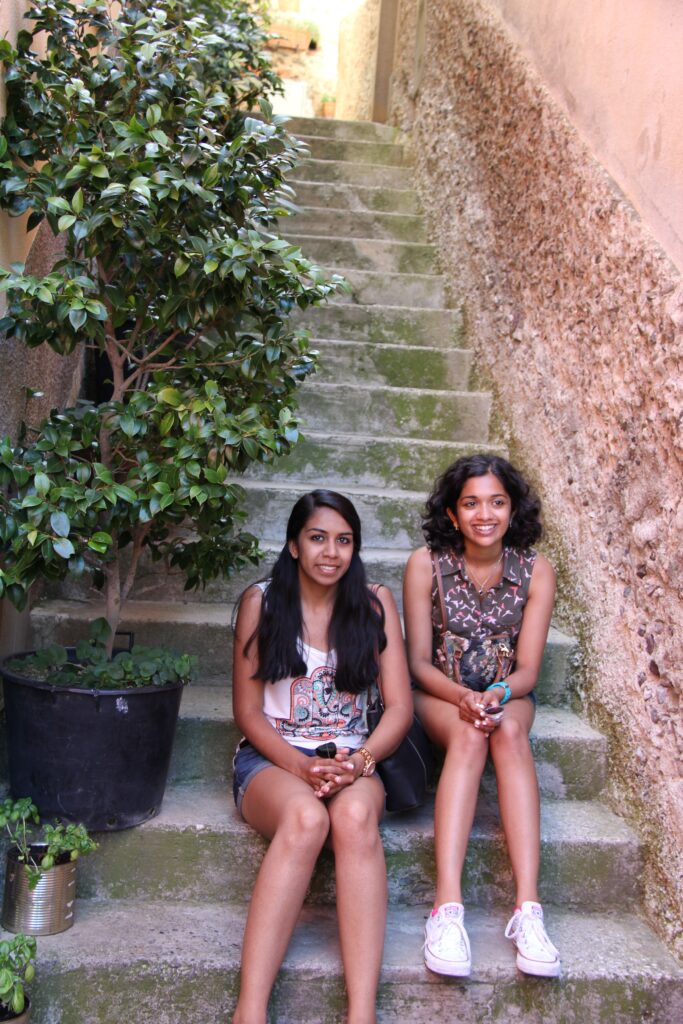

Corniglia, is the only village of the Cinque Terre that is not directly on the sea. It has a small beach that is accessible by a stairway down from the village. To reach it, one must descend the Lardarina stairway, a long brick staircase with 383 steps, or take a road from the train station. The beach is less crowded compared to other Cinque Terre beaches.
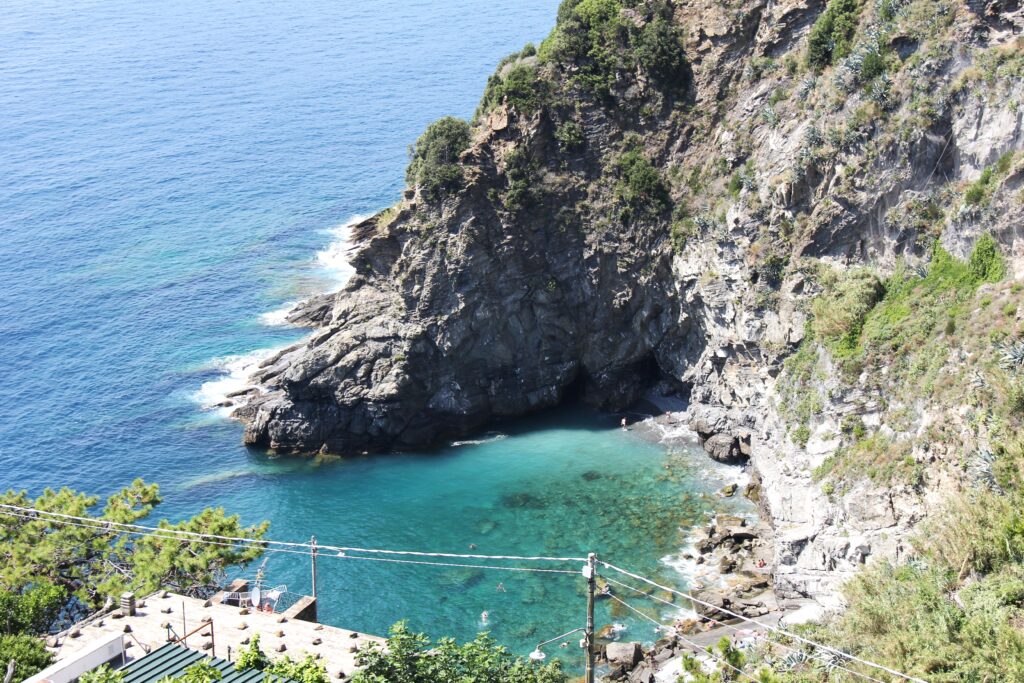
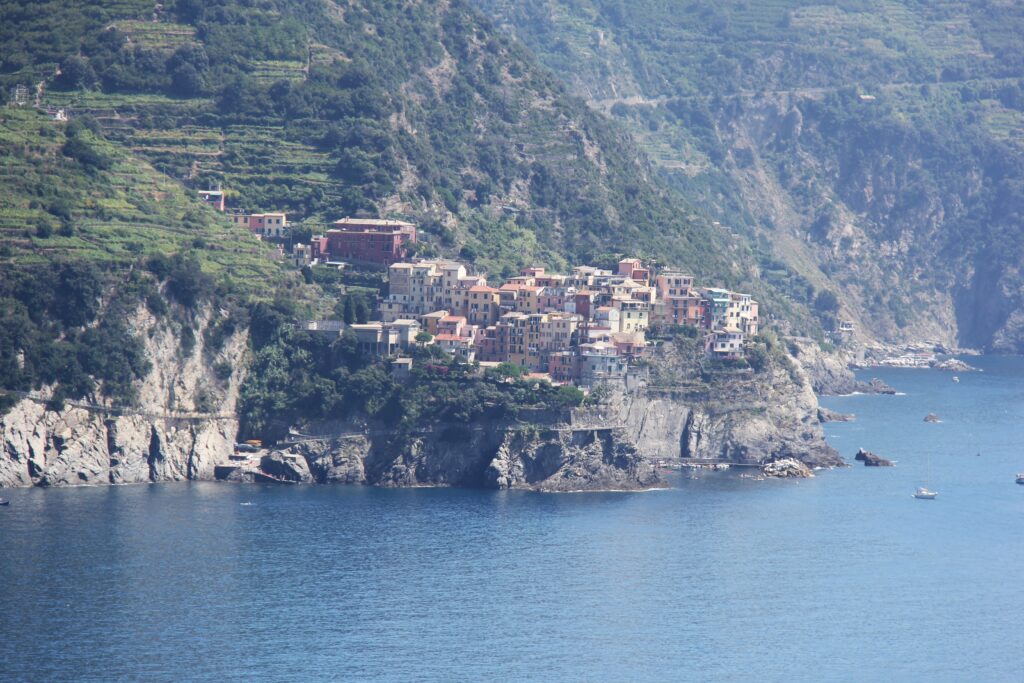
Riomaggiore is one of the most scenic places in Cinque Terre with its lovely harbor and amazing atmosphere. It’s best enjoyed at sunset as the fading lights casts a beautiful orange glow over the buildings. We recommend Riomaggiore to young travelers or couples looking for a romantic place to stay.
Pisa complex – also known as Piazza dei Miracoli or Cathedral Square, Pisa is a UNESCO World Heritage Site that encompasses a group of 4 religious buildings –
- Camoanile or the Leaning Tower
- Cathedral
- Baptistery
- Camposanto Monumentale (Cemetery)
- A combo ticket to see all of the above + climb the Leaning Tower = €27
- Combo Ticket, No climbing Tower = €11
We only had time to walk around the entire complex and admire the buildings from outside. Climbing the tower required standing in line, followed by climbing 296 steps to the top.
Pisa Complex, Leaning Tower – This freestanding bell tower of Pisa Cathedral is known for its nearly four-degree lean, the result of an unstable foundation, which is the main reason that the tower has become one of the most visited tourist attractions in the world as well as an architectural icon of Italy. The height of the tower is 55.86 m (183.3 ft) from the ground on the low side and 56.67 m (185 ft 11 in) on the high side. The tower has 296 or 294 steps; the seventh floor has two fewer steps on the north-facing staircase.
The tower began to lean during construction in the 12th century due to soft ground which could not properly support the structure’s weight. It worsened through the completion of construction in the 14th century. By 1990, the tilt had reached 5.5 degrees. The structure was stabilized by remedial work between 1993 and 2001, which reduced the tilt to 3.97 degrees.
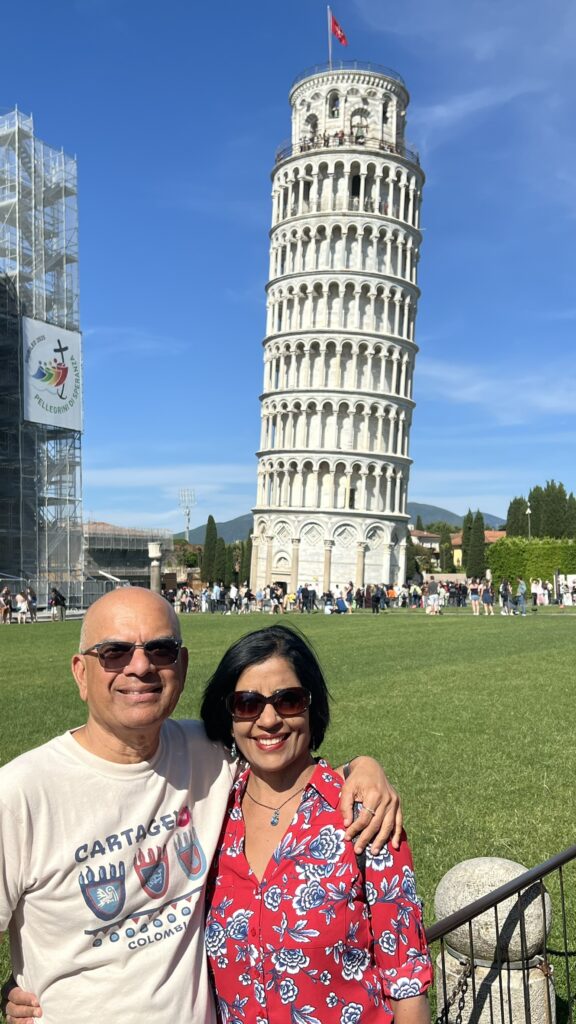
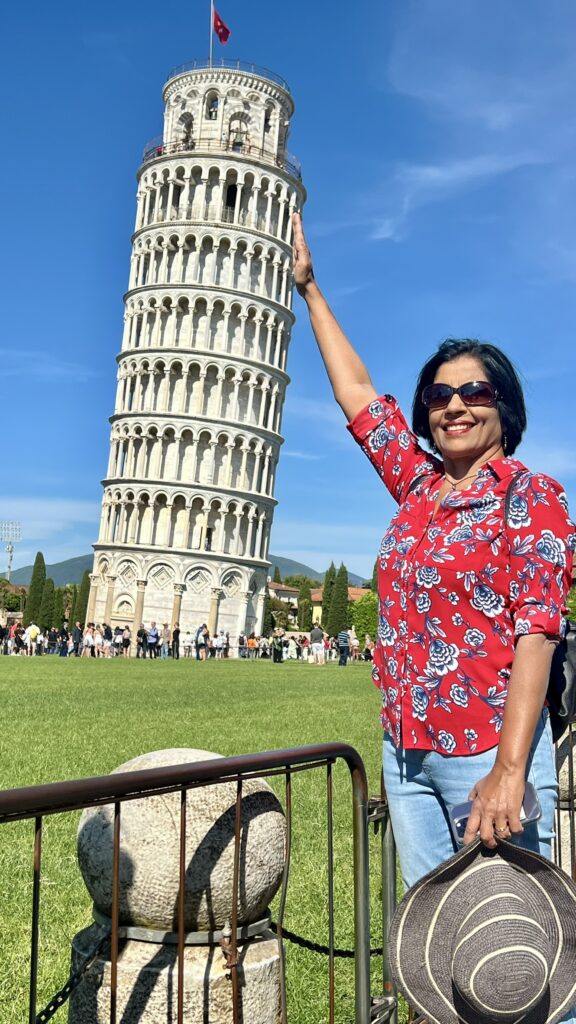
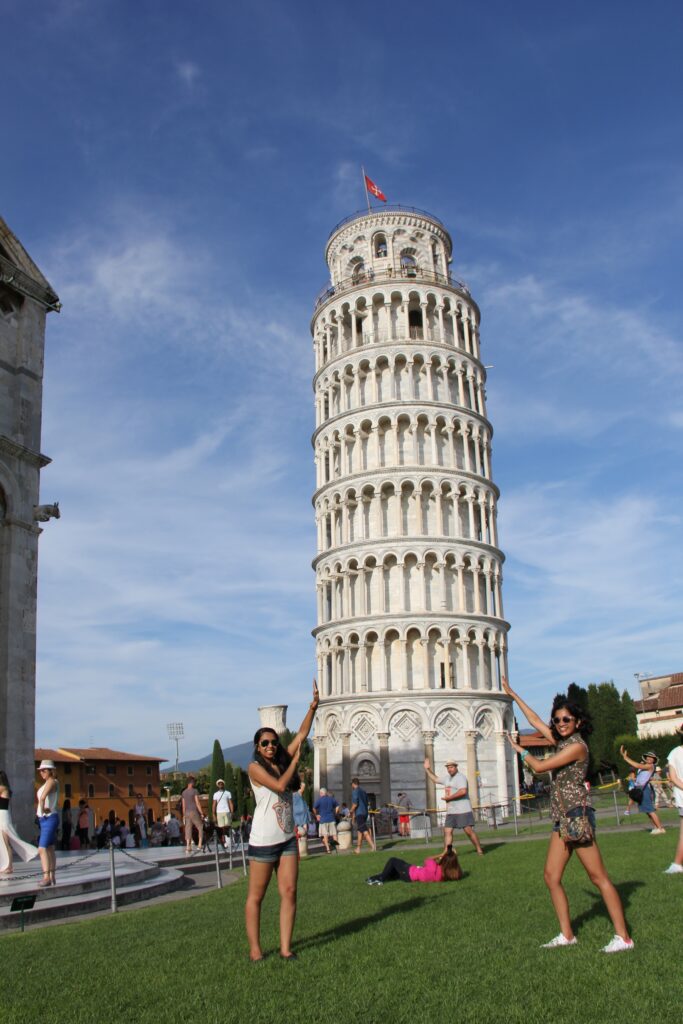
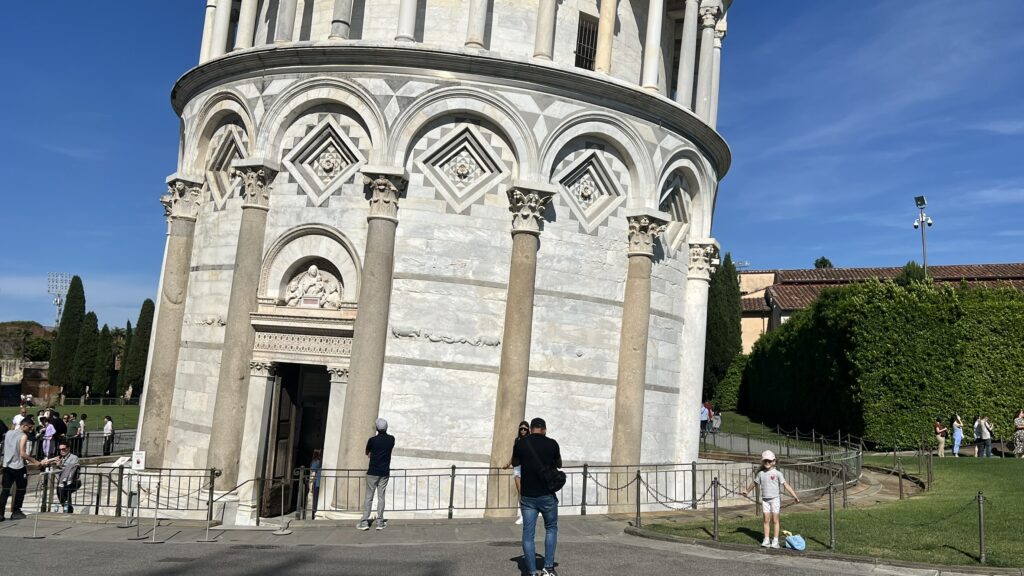
Pisa Complex, Cathedral – is the oldest structure in the complex and is dedicated to the Assumption of the Virgin Mary. It was built between 1064-1092 and consecrated in 1118, and is the seat of the Archbishop of Pisa. Additional enlargements and restorations have been done in the later years. The outer facing of the Cathedral is decorated in alternating black and white shades in stripes of Arab influence and a massive use of reused materials from Roman monuments that emphasized the greatness of the city of Pisa, “altera Roma”.
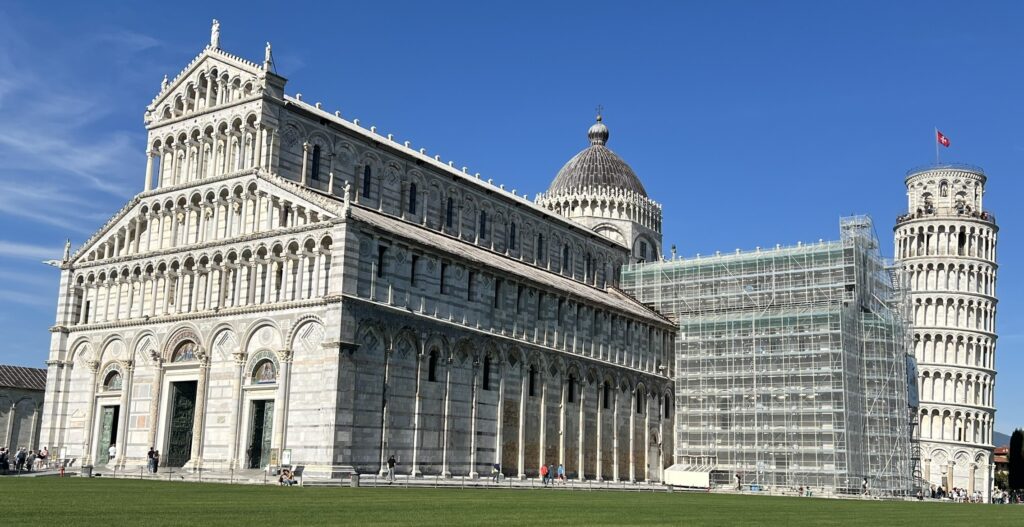
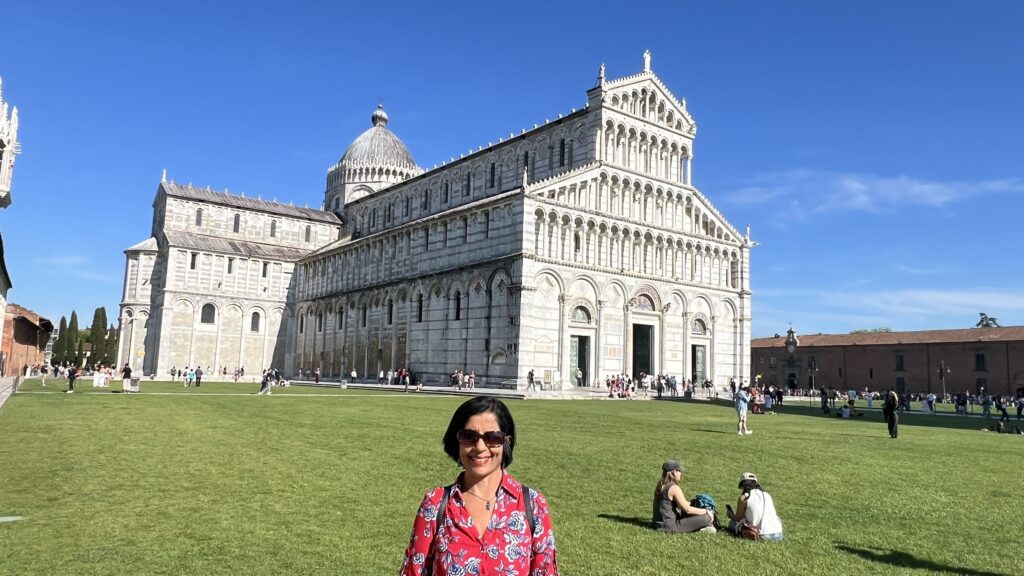
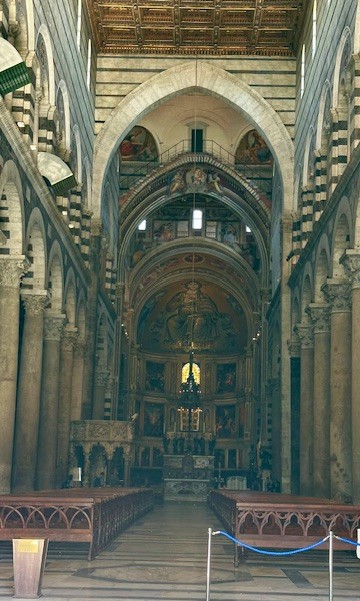
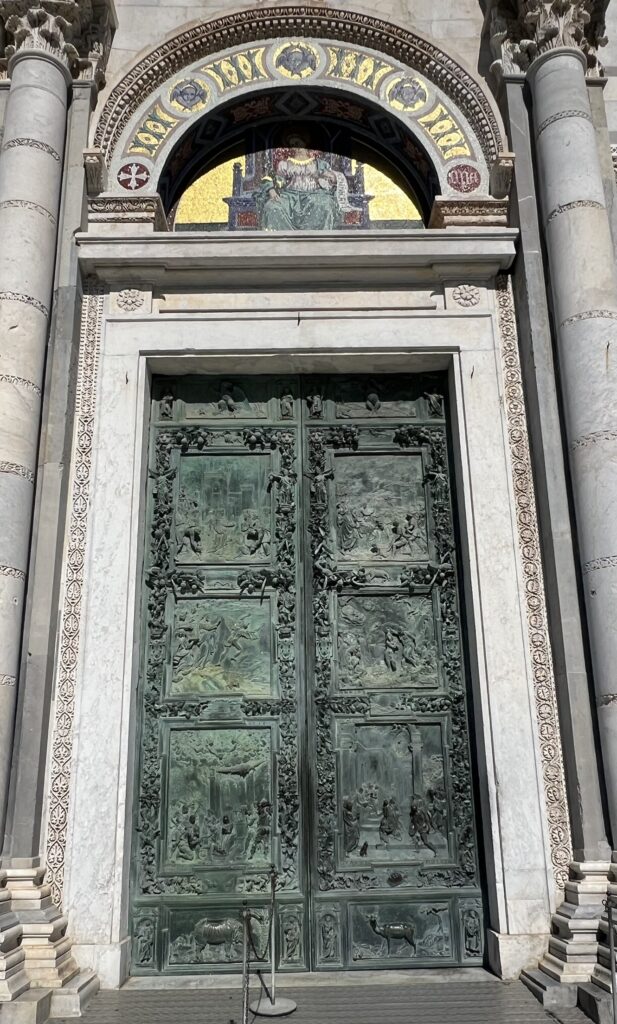
Pisa Complex, Baptistery – The Pisa Baptistery of St. John was constructed between 1152-1363 to replace an older baptistery and is the second oldest building in the Pisa complex. It is the largest baptistery in Italy, with a height of 54.86 and diameter of 34.13 m. Like the cathedral and the campanile the Baptistery is built of bichromatic Carrara marble, white with recurring horizontal lines in black stone, also used for abstract floral and graphic decoration, a unique trait of some of the most important religious buildings in Tuscany.
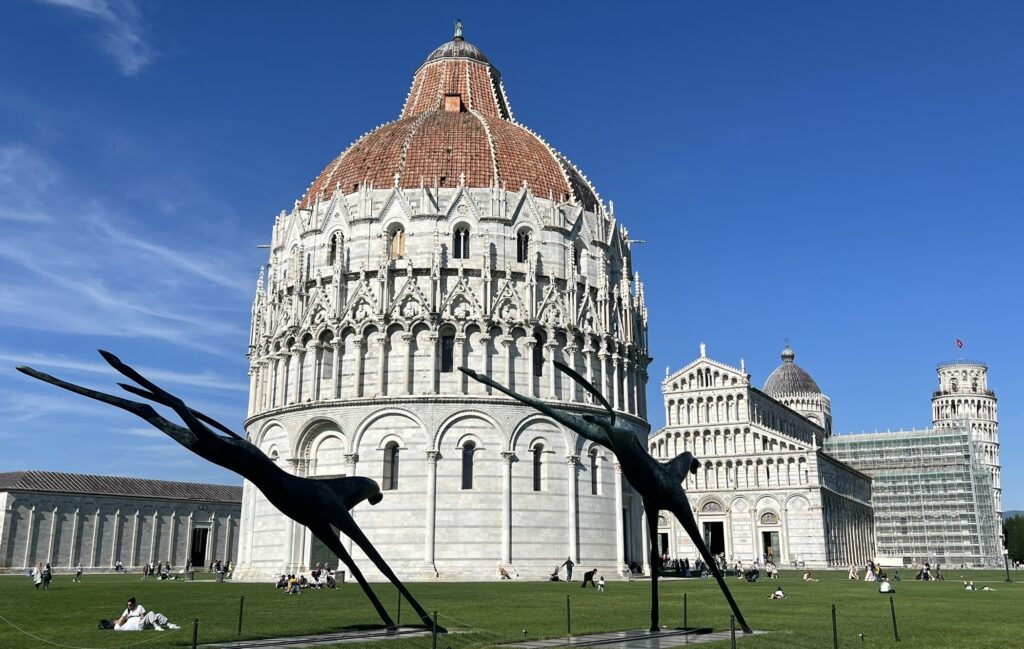
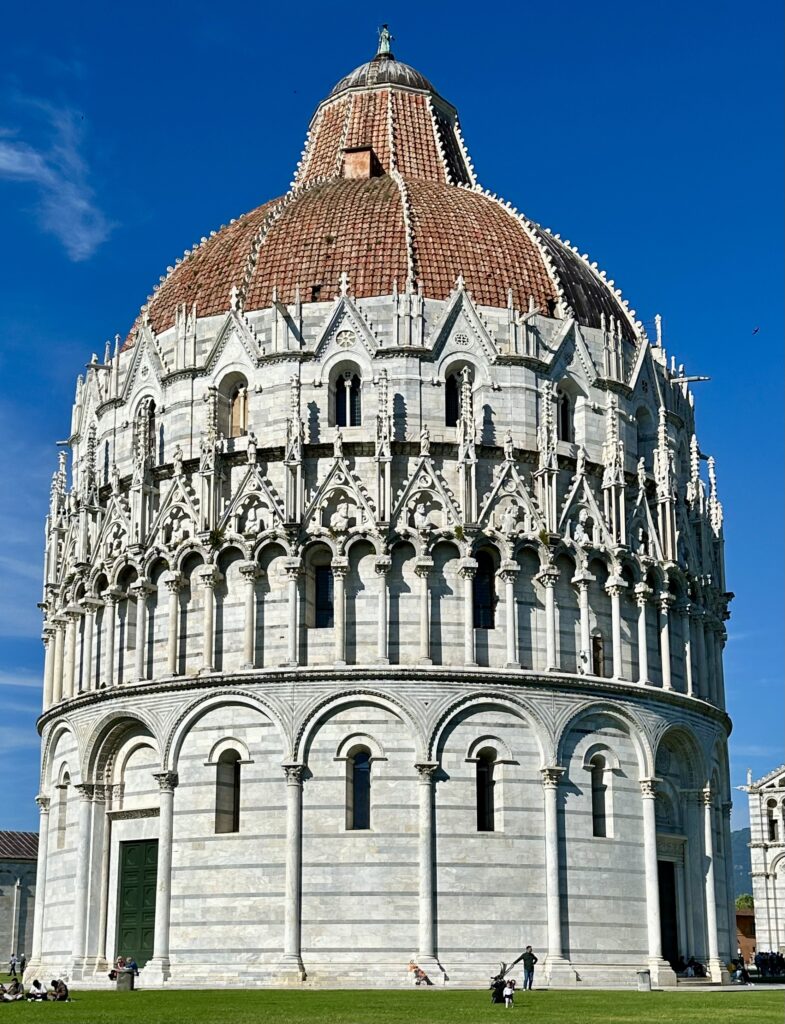
Pisa Complex, Camposanto Monumentale – The Camposanto was the last structure to be constructed in the Pisa Complex after the Cathedral, Baptistery, and the famous leaning Tower. The cemetery, a central lawn bordered by Gothic porticoes, was built in 1277 and, during the late Middle Ages, prominent local people were buried there in traditional Roman sarcophagi. The earth of the grassy courtyard was thought to have been carried back from Palestine in the Second Crusade and therefore earned the name camposanto, meaning “holy field.”
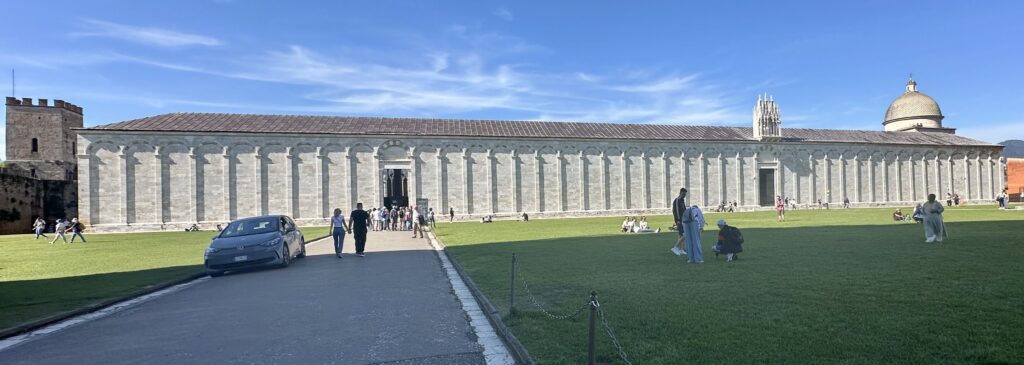
Review of Viator big group guided tour – We went on this tour in 2025 and I would not recommend this tour – it was inefficiently organized. We spent a lot of time walking to and from stations as the buses were apparently not allowed to drop us off close to the station. We only had 45 min in Manarola, 2 hours in Monterosso which included lunch time, and 1 hour in Pisa. We spent the rest of the 5 hours walking or driving. The guide did not give us any interesting information about the places we were visiting.
Self Tour from La Spezia – If you have 2-3 days to spare, the best way to visit Cinque Terre and Pisa without spending a fortune and in a relaxed way will be to stay in La Spezia. This small town is where most travelers will arrive by train before catching a second train to any of the five towns. Although it may not be as scenic as staying in a Cinque Terre village, accommodations are cheaper and it does not take long to get to these towns by train. It takes only 9 minutes to get to Riomaggiore, the first of the five towns on the train route.
